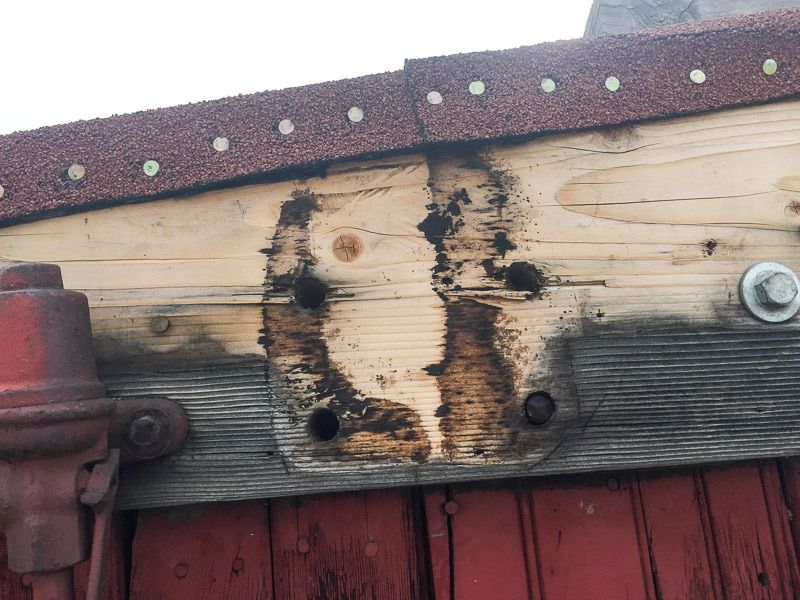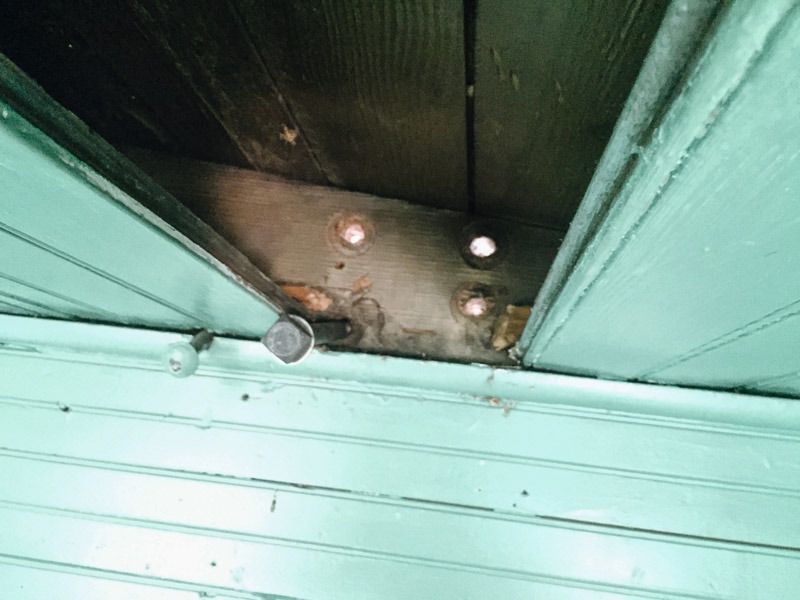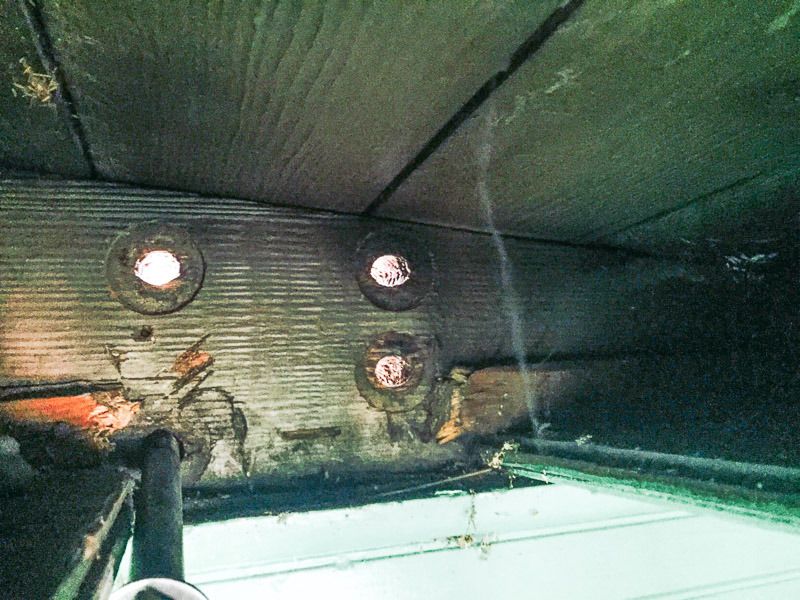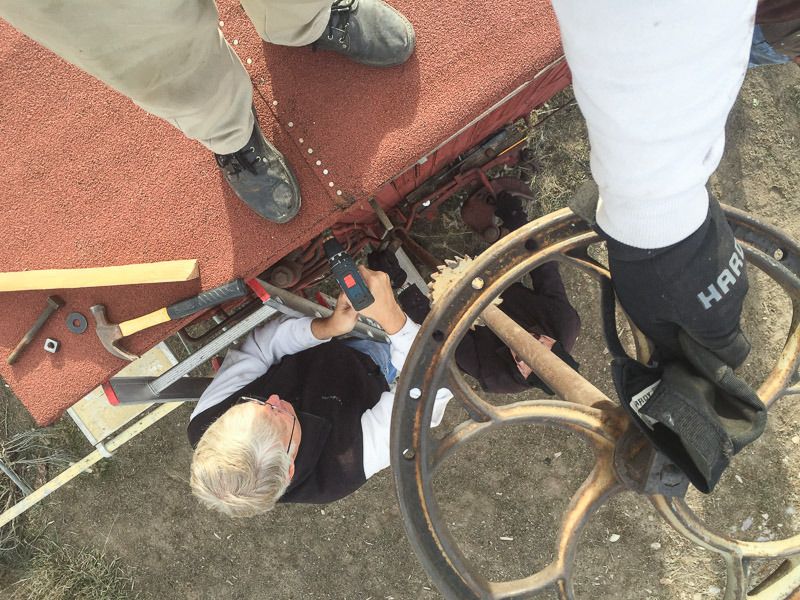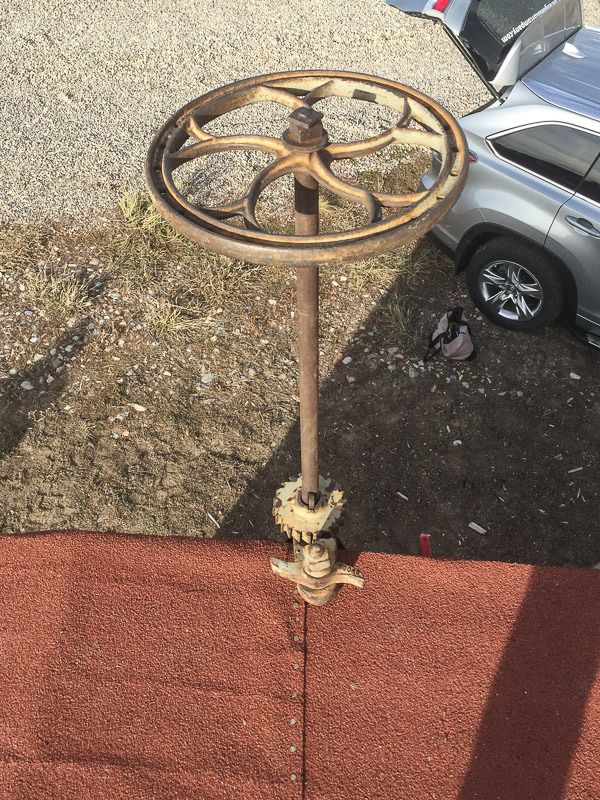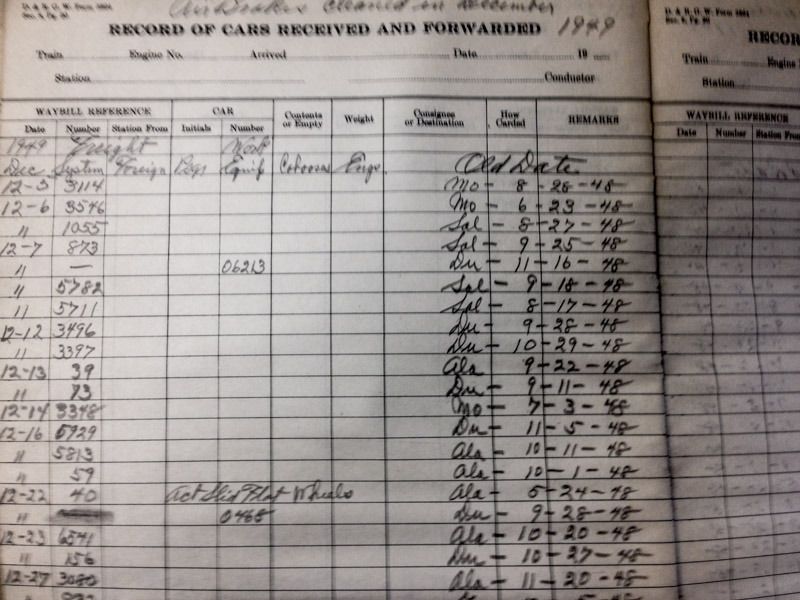Last week before the snows hit the Durango area, we had a work session on D&RGW 04432 Water service Bunk Car. My task for the day was to remove the windows so that they could be copied and new ones made over the winter.
The side windows were added when the original box car was converted to a bunk car. They are single 4 pane wooden windows.
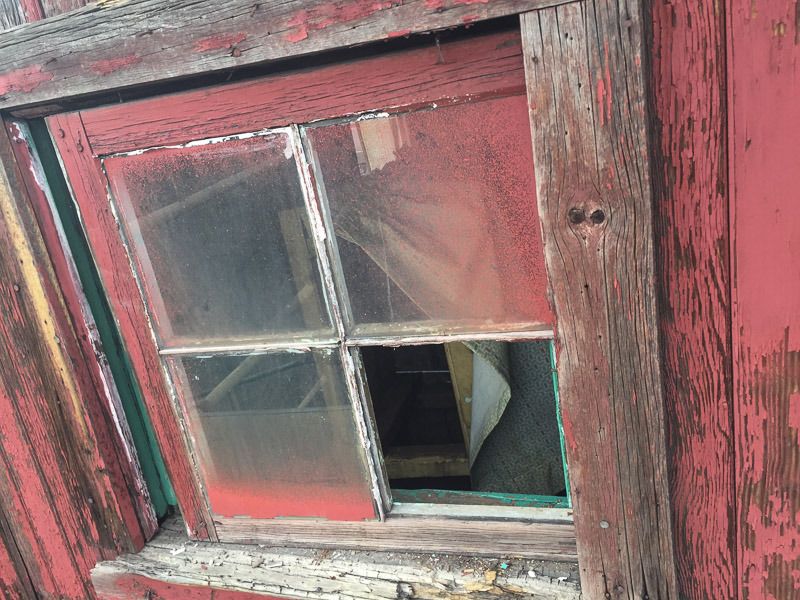
What makes them different is that they slide into the wall cavity, I guess that you would call then “Pocket Windows”.
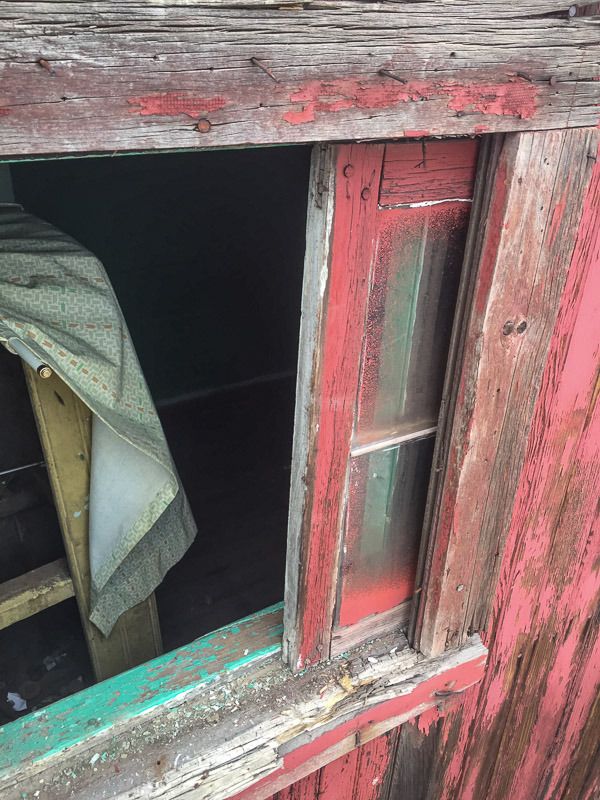
They were held in place just by the 1x3 trim molding. Here is looking into the “Sliding Pocket”.
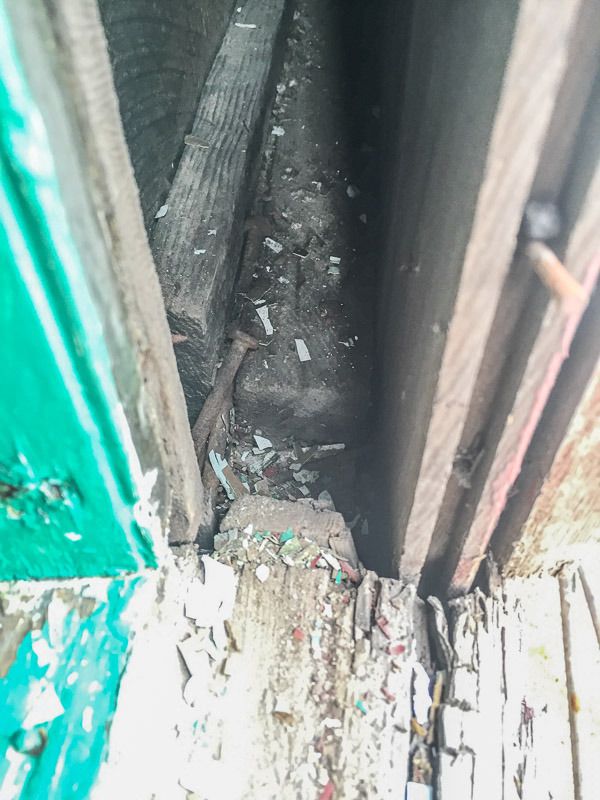
NOTE: To make the space for the window to slide in, one of the vertical wall support beams had to be cut. You can see the top of it just inside the opening. There was no added support on the car to take up the load. But there was the added boards on the inside walls, they must have thought that that would make up for the three cut posts.
Now, these windows, As simple as they seem, Were hand crafted by a master carpenter. After pulling them out I got to looking them over, and the craftsmanship that was applied to a simple window, has really upped my apparition for the guy that made these shortly after the turn of the century. Here is the top corner, its in pretty good shape for 100yr old. Note how it was made. I’m sure that the nails were added many years later.
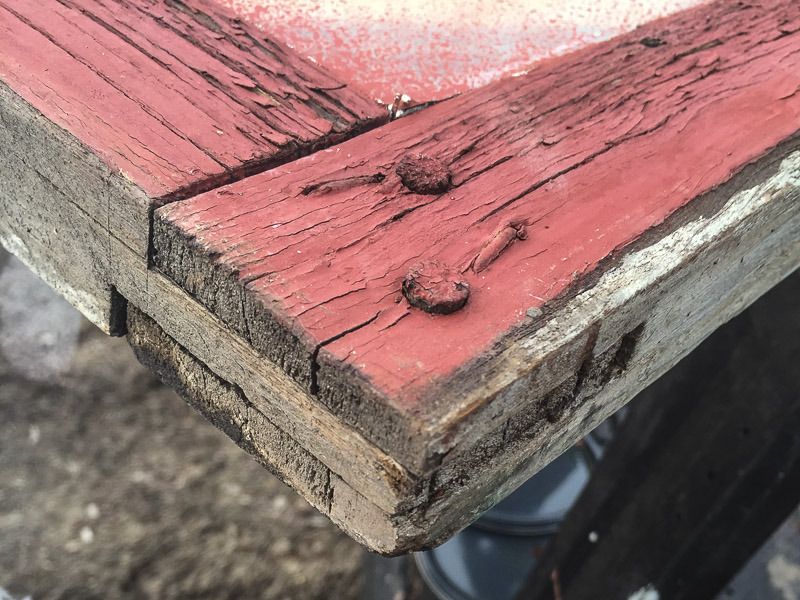
Note the tenons, and the wood pegs. also note that the cuts for the glass to sit in meant that the tenons had to be offset cut. If you look close you can still see the scribe marks for the cuts. Fine carpentry here. There are a half a dozen simpler ways to make a window, but this guy took pride in doing it right.
The other corners didn’t fare so well over the years.
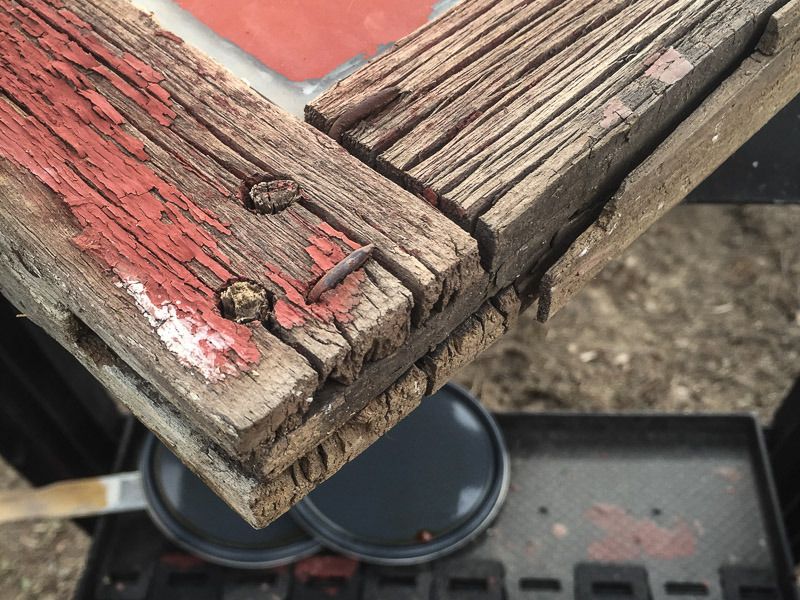
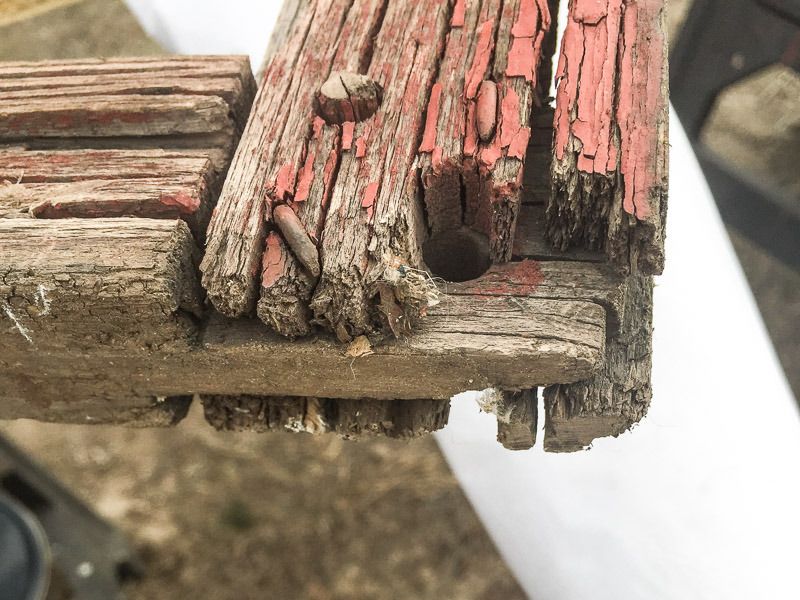
Might not have held up so well, but you can see the craftsmanship that went into the corners.
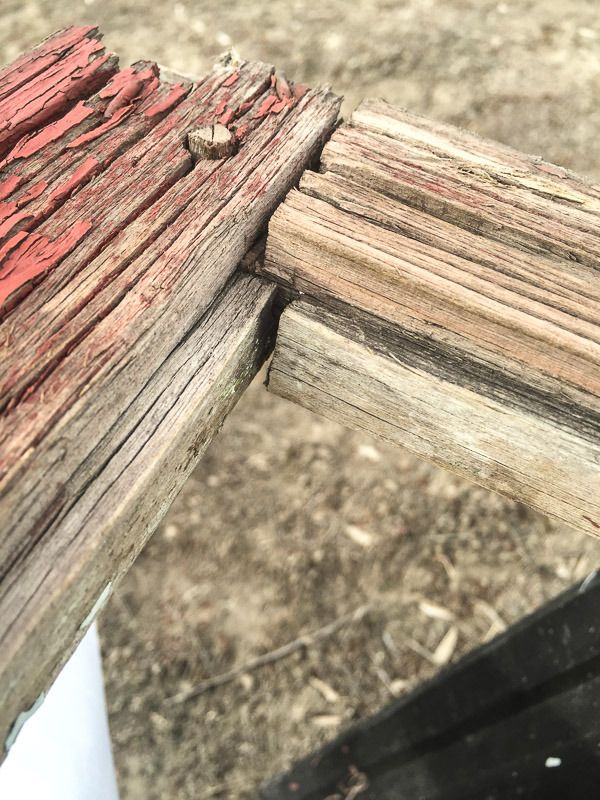
And the same kind of workmanship for the center pieces, no shortcuts taken.
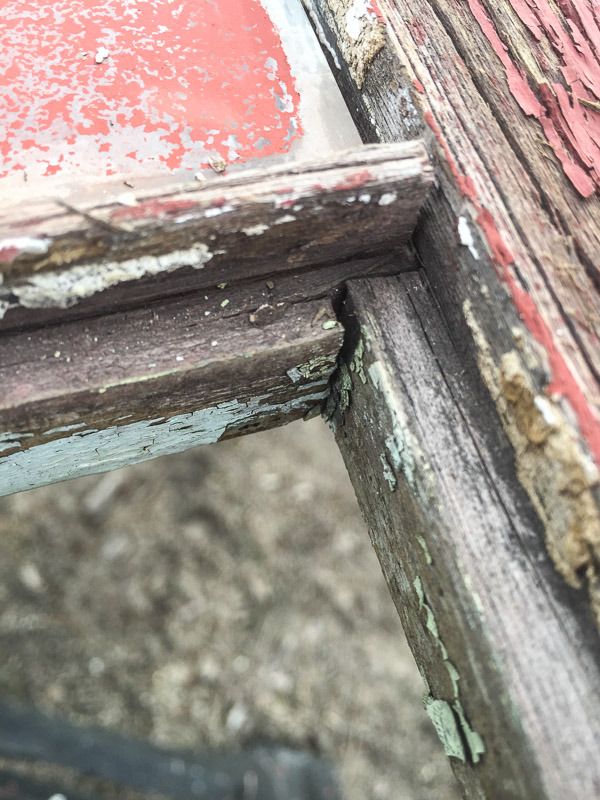
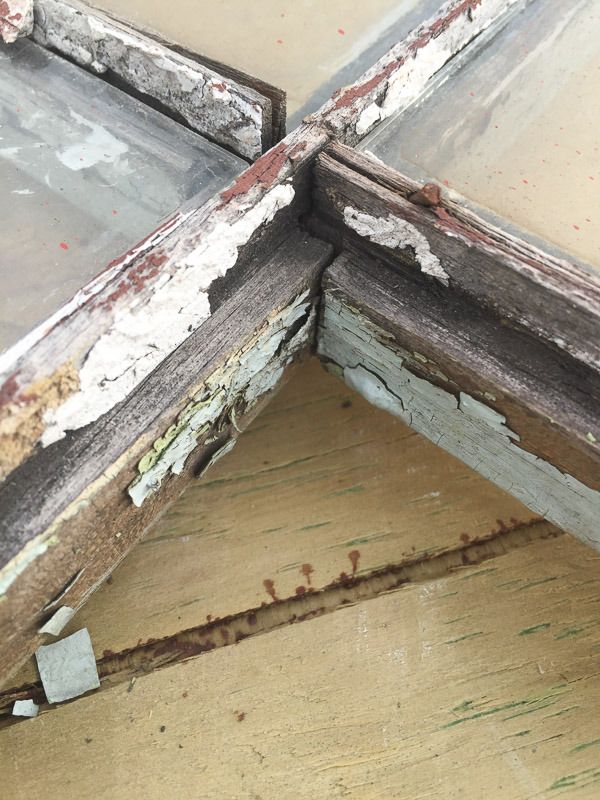
Any one that works with wood can really appreciate the work and extra effort put into this simple window.
Now the widows in the doors, well they were diffiniatlly made at a latter date, and not made for the door, but they kinda fit so they are just slapped together in the doors, poor fit and shortcut were taken where ever they could.
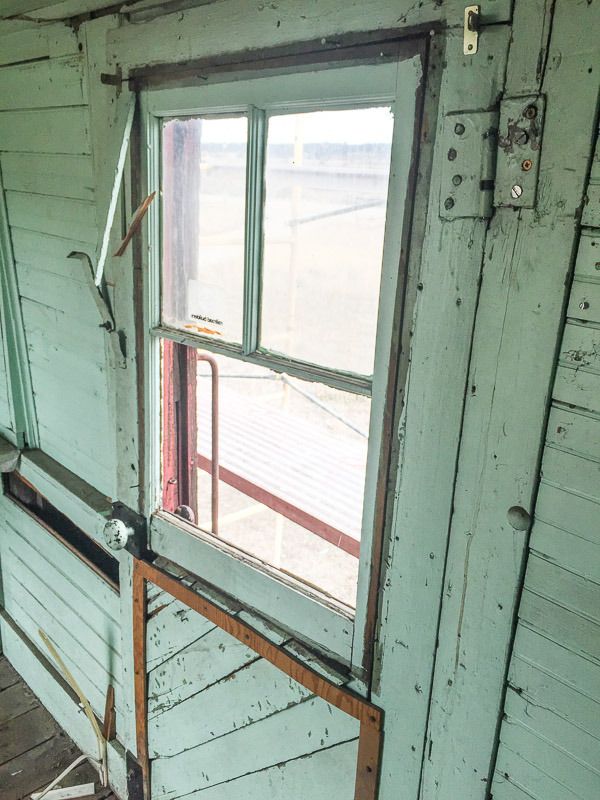
These will be replaced with the same quality as the side windows.
One more little step along the way to restoration.
